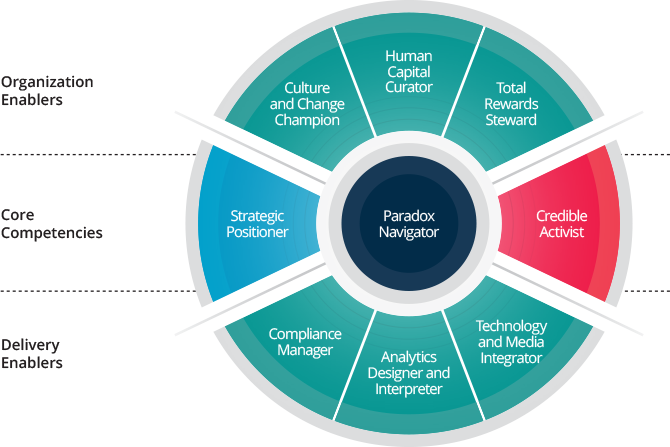The 2016 Human Resources Competency Study sponsored by The RBL Group and the University Of Michigan Ross School of Business is available here.
 This is the seventh round (since 1987) of a 360 format survey to understand the perceived performance of HR professionals and HR departments. It provides us an understanding of the critical competencies for HR professionals, competency level and activities of HR departments. Some key highlights:
This is the seventh round (since 1987) of a 360 format survey to understand the perceived performance of HR professionals and HR departments. It provides us an understanding of the critical competencies for HR professionals, competency level and activities of HR departments. Some key highlights:
- A new HR competency has been added to the HR skill set: Paradox Navigator. It represents the skill of navigating and balancing organizations operational needs: short versus long term goals, internal vs. external, centralization vs. decentralization. According to the researchers Paradox Navigator is the “messenger” between the competencies of strategic positioner (using and understanding business strategy to set direction) and credible activist (using trust and relationship to align and move an organization forward).
- Great HR people are not enough-the HR Team needs to be aligned and focused on impacting key business imperatives.
- Greatest value to internal stakeholders is the HR being a credible activists and the HR team focused on Integrated HR activities: practices which connect HR solutions to the business and build a longer term HR strategy.
- Greatest value to external stakeholders is HR being a strategic positioner and the HR team focused on Information Management: bringing external competitive information and internal data to drive a business advantage.
Internal stakeholders seem to value an inside/out perspective for their HR professional: understand my business, understand my needs, and show me you get it by offering solutions that are connected to my business. External stakeholders are valuing outside/in: understand the business landscape, the competition and bring that context to the business in designing solutions that set the organization apart from their competition. My question is, aren’t they interrelated? When we discuss leaders within an organization don’t we want them to understand the external environment, the competition, the customer, the global marketplace and relate that knowledge to their understanding of the organization to create strategies and business goals to drive performance? Since our acceptance that we are in a VUCA world, in assessment discussions of senior executive talent we intertwine inside/outside/inside:
- First understand our business, our marketplace, our customer—define ourselves
- Second understand the external environment: the global marketplace, economy and trends
- Third bring that external knowledge back inside and build a strategy and business initiatives
For more information on how to implement Inside-Outside-Inside Leadership, please refer to Charlie Rogers post “Implementing Inside-Outside-Inside Leadership” here.

